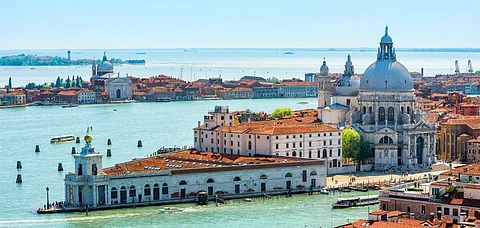
- Destinations
- Experiences
- Stay
- What's new
- Editor’s Picks
- Responsible Tourism
- CampaignsCampaigns
- Subscribe

The Italian city of Venice, famous for the Saint Mark&rsquos Square and the Bridge of Sighs, has an often-overlooked jewel on it the lagoon. With only occasional noises of tourist boats or the calls of a lapwing, and sandpipers, the lagoon here is a peaceful space. Once home to a rich variety of fish and birds, it now has an increased level of salt content due to human intervention. However, an environmental project plans to introduce more freshwater into the lagoon and restore it to its former glory.
&ldquoThe idea is to recreate an environment that has been lost over time because rivers were diverted out of the lagoon,&rdquo said Rossella Boscolo Brusa, the Life Lagoon Refresh project&rsquos leader.
According to Brusa, a researcher at the Higher Institute for Environmental Protection and Research, diversions were done to clean up the swampy areas and combat malaria. But the action came with an unforeseen consequence. "It led to increasingly salty water and drop in the number of reeds, a very precious habitat for protected species, or species of commercial interest," she said.
According to experts, over half the lagoon here used to be reed beds and salt marshes some time ago. So much so, the city's Cannaregio district was even named after the plants, "canna" being the Italian for "reed". Today, only 34 hectares of the same remain.
The reeds usually tolerate some salinity. But the water in the inner parts of the lagoon, which should be between zero and 15 on the salinity scale, is at 30, near to the amount found in seawater. Here, the Life Lagoon Refresh project comes in, diverting a freshwater flow from the Sile River into the lagoon.
A manmade canal that has been operational since May, allows the flow of water to be modulated according to the project's needs in the area. Barriers made of biodegradable coconut fibres help the reeds develop. In total, the project aims to restore about 20 hectares of reeds, which currently seems well on track.
The salinity here is continuously monitored along with water quality. A large net is dragged vertically as per the seine fishing method to evaluate the growth of flora and fauna. The European Commission-supported project also aims to draw birds such as the purple heron here. Even the Local fishermen are chipping in by helping transplant seagrass to speed up the return of aquatic plants.
